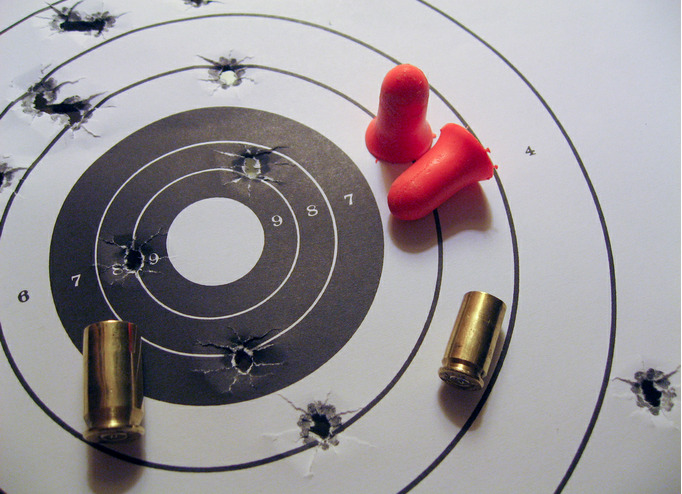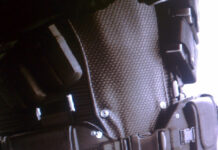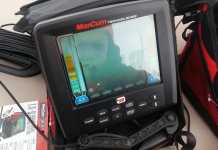
Are you a shooter looking for an accurate aim? Comparing rifle scopes and iron sights can help you increase your accuracy. You can make an informed decision about which firearm setup is right for you.
Get ready to be enlightened as we explore the pros and cons of both sighting systems!
Introduction
Rifle scopes and iron sights are two popular aiming devices used by hunters and shooters. While iron sights have been in use for centuries, rifle scopes have become increasingly popular due to their precision and ease of use. Both have their strengths and weaknesses, and choosing between them will depend on your personal preferences and shooting needs.
Pro Tip: Consider the type of shooting you will be doing when choosing between rifle scopes and iron sights. If you require precision at long ranges, a rifle scope may be the better option. If you prefer a more traditional and lightweight setup, iron sights may be the way to go. That said, you may want the best slug gun scope for deer hunting.
Definition of Rifle Scope and Iron Sights
When it comes to shooting accuracy and precision, there are two main sighting systems used by firearms enthusiasts: rifle scopes and iron sights.
Rifle scopes are a sighting device that utilizes a magnifying lens to give the shooter a clear and focused view of their target. These scopes come in a variety of magnification levels and can be adjusted for windage and elevation to compensate for environmental factors.
Iron sights, on the other hand, are a type of non-optical sight that uses a front post and a rear notch to align the shooter’s eye with the target. The shooter must align the front post in the notch of the rear sight, which allows them to aim their shot.
Both rifle scopes and iron sights have their advantages and disadvantages, and the choice between them ultimately comes down to personal preference and intended use. While scopes offer greater magnification and precision, iron sights are simpler and less expensive.
Pro Tip: It’s always best to practice with both systems to have a better understanding of each and more options while shooting.
Advantages and Disadvantages of Rifle Scope
Rifle scope and iron sights are both great options to consider for hunting or shooting. However, each has its own advantages and disadvantages that you should know before deciding which one to use.
Advantages of Rifle Scope:
Magnification: A good scope for a mosin nagant will offer magnification and can help you see the target clearly even from a long distance.
Improved Accuracy: The magnification and reticles in rifle scopes help improve accuracy, making them ideal for long-range shooting.
Disadvantages of Rifle Scope:
Cost: Rifle scopes can be expensive, especially those with advanced features like illuminated reticles and parallax adjustment.
Durability: Rifle scopes require proper maintenance to remain in good working condition over time, including protection from impact, moisture, and extreme temperatures.
Advantages of Iron Sights:
Lightweight: Iron sights are lightweight and don’t add much weight or bulk to your rifle.
Durability: Iron sights are durable and can withstand rough handling, including impact, moisture, and extreme temperatures.
Disadvantages of Iron Sights:
Limited Range: Iron sights are limited in range, making them less suitable for long-range shooting.
Poor Vision: Iron sights can be challenging to use if you have poor vision or are shooting in low light conditions.
Both rifle scopes and iron sights have their respective strengths and weaknesses, so it’s essential to choose one that best suits your shooting needs.
Pro tip: Consider your shooting needs and preferences to determine whether to choose rifle scopes or iron sights.
Advantages and Disadvantages of Iron Sights
Iron sights and rifle scopes are the two primary sighting systems used by shooters, each with its own unique advantages and disadvantages.
Advantages of Iron Sights:
- Lightweight and compact, they require no additional equipment to use.
- They don’t require batteries or electricity to operate, making them reliable and long-lasting.
- They allow for a narrower field of view, which can improve focus and accuracy.
Disadvantages of Iron Sights:
- They can be challenging to use in low light conditions or at long distances.
- They require more skill and practice to use effectively.
- They can be less precise than scopes and may require frequent readjustment.
Advantages of Rifle Scopes:
- They offer increased magnification and can provide a clear image at long distances.
- They are easier to use and require less practice to become proficient.
- They allow for consistent and precise shot placement.
Disadvantages of Rifle Scopes:
- They can be heavy and bulky, adding weight to the rifle.
- They can be expensive and require batteries or electricity to operate.
- They may have a narrower field of view, which can make it challenging to track moving targets in close quarters.
Ultimately, choosing between iron sights and rifle scopes depends on personal preference, shooting style, and the specific situation.
Factors to Consider When Choosing Between Rifle Scope and Iron Sights
When it comes to shooting accuracy, choosing between a rifle scope and iron sights could mean the difference between hitting your target and missing it altogether. Here are the key factors to consider when deciding between the two:
Range: Rifle scopes are better suited for long-range shooting, while iron sights are more practical for shorter distances.
Target: For precision shooting or hunting small game, a rifle scope is better. However, for quick and close-range shooting, iron sights can be more effective — just like having a good shotgun recoil pad.
Conditions: In low light or adverse weather conditions, rifle scopes offer better visibility and precision. Conversely, iron sights can be more advantageous in bright light conditions due to reduced glare.
Budget: Rifle scopes are more expensive than iron sights, so consider your budget when making a choice.
Preference and Comfort: Ultimately, the choice between rifle scope and iron sights can be a matter of personal preference and comfort in using either.
Pro Tip: Before making a decision, try out both rifle scopes and iron sights to determine which one feels more comfortable and effective for your shooting needs.
Types of Rifle Scopes
When it comes to shooting, whether for hunting or target practice, there are two main options for aiming: rifle scopes and iron sights. While iron sights have been a trusty method of aiming for centuries, rifle scopes have become increasingly popular in recent years, thanks to their precision and clarity.
There are several types of rifle scopes available in the market today, each with its unique features and advantages:
1. Fixed Power Scopes – These have fixed magnification and are durable and lightweight.
2. Variable Power Scopes – These allow adjusting magnification as per the need and offer versatility.
3. Night Vision Scopes – These types of scopes offer a bright and clear image in low-light conditions and darkness.
4. Prism Scopes – These offer a more compact and lightweight option as compared to traditional scopes.
5. Red Dot Scopes – These scopes project an illuminated dot onto the target, making aiming easy and quick.
Whether you opt for a traditional iron sight or the latest rifle scope technology, your choice may depend on your individual level of expertise, the distances you’ll be shooting, and the type of shooting you will be doing.
Types of Iron Sights
Iron sights come in different types, each with its unique features, pros, and cons. The three primary types of iron sights are the blade sight, the notch sight, and aperture sight.
Blade sight: with a flat, thin blade placed near the muzzle of the rifle, this type of sight is common in shotguns and pistols. The blade sight works by lining up the blade with the target to get an accurate shot.
Notch sight: This consists of a U or V-shaped notch placed on the rear of the rifle and the front sight on top of the barrel. A shooter may align the front sight with the notch to take a precise aiming point.
Aperture sight or “peep sight”: A circular aperture located at the rear of the rifle offers a wider field of view as the shooter looks through the hole created by the aperture. This sight is ideal for mid to long-range shooting with rifles.
Although iron sights may have a higher learning curve compared to rifle scopes, they are more durable, lightweight, and may aid a shooter in becoming more accurate with their shots.
Conclusion
In conclusion, whether to use a rifle scope or iron sights depends on the shooting context and personal preference.
Iron sights are a reliable and low-cost option for short-range shooting and hunting in dense forests or brush. They are also useful in situations where a quick target acquisition is required.
Rifle scopes, on the other hand, provide better accuracy and precision for long-range shooting and hunting in open fields or at stationary targets. They also offer various magnification options and reticles to suit different shooting scenarios.
Ultimately, the decision between a rifle scope and iron sights is up to the shooter’s individual needs and preferences. It’s important to choose the one that aligns with your shooting goals and provides the best shooting experience for you.
Originally posted 2023-04-22 14:08:32.


